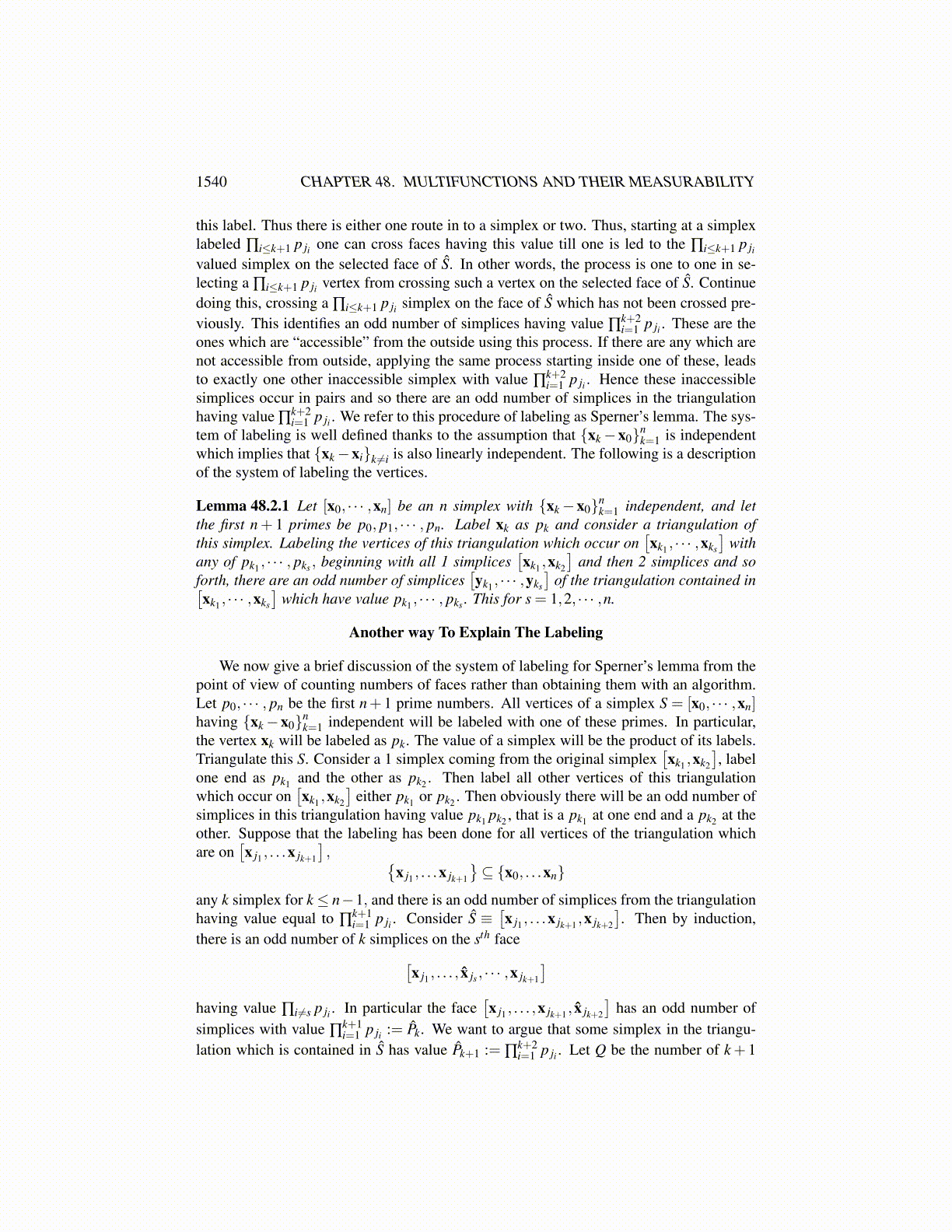
1540 CHAPTER 48. MULTIFUNCTIONS AND THEIR MEASURABILITY
48.2 Existence of Measurable Fixed Points48.2.1 Simplices And LabelingFirst define an n simplex, denoted by [x0, · · · ,xn], to be the convex hull of the n+1 points,{x0, · · · ,xn} where {xi−x0}n
i=1 are independent. Thus
[x0, · · · ,xn]≡
{n
∑i=0
tixi :n
∑i=0
ti = 1, ti ≥ 0
}.
Since {xi−x0}ni=1 is independent, the ti are uniquely determined. If two of them are
n
∑i=0
tixi =n
∑i=0
sixi
Thenn
∑i=0
ti (xi−x0) =n
∑i=0
si (xi−x0)
so ti = si for i ≥ 1. Since the si and ti sum to 1, it follows that also s0 = t0. If n ≤ 2,the simplex is a triangle, line segment, or point. If n ≤ 3, it is a tetrahedron, triangle, linesegment or point. To say that {xi−x0}n
i=1 are independent is to say that {xi−xr}i̸=r areindependent for each fixed r. Indeed, if xi−xr = ∑ j ̸=i,r c j (x j−xr) , then you would have
xi−x0 +x0−xr = ∑j ̸=i,r
c j (x j−x0)+
(∑
j ̸=i,rc j
)x0
and it follows that xi − x0 is a linear combination of the x j − x0 for j ̸= i, contrary toassumption.
A simplex S can be triangulated. This means it is the union of smaller sub-simplicessuch that if S1,S2 are two simplices in the triangulation, with
S1 ≡[z1
0, · · · ,z1m], S2 ≡
[z2
0, · · · ,z2p]
thenS1∩S2 =
[xk0 , · · · ,xkr
]where
[xk0 , · · · ,xkr
]is in the triangulation and{
xk0 , · · · ,xkr
}={
z10, · · · ,z1
m}∩{
z20, · · · ,z2
p}
or else the two simplices do not intersect. Does there exist a triangulation in which allsub-simplices have diameter less than ε? This is obvious if n ≤ 2. Supposing it to be truefor n− 1, is it also so for n? The barycenter b of a simplex [x0, · · · ,xn] is just 1
1+n ∑i xi.This point is not in the convex hull of any of the faces, those simplices of the form[x0, · · · , x̂k, · · · ,xn] where the hat indicates xk has been left out. Thus [x0, · · · ,b, · · · ,xn]is a n simplex also. Now in general, if you have an n simplex [x0, · · · ,xn] , its diameter is